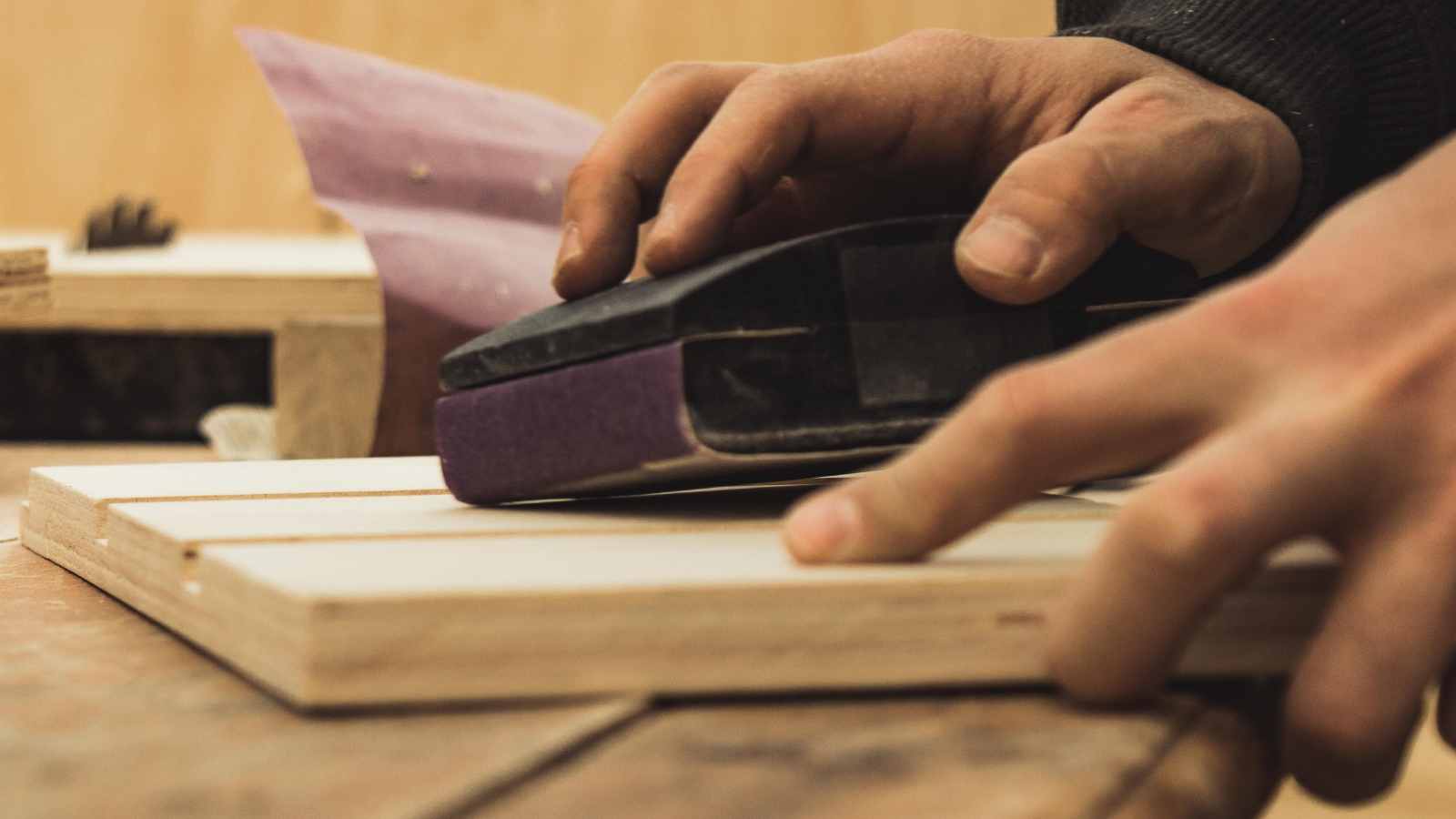Sandpaper – a stiff paper or light cardboard with one side coated in rough particles, used for making things smooth. Should be easy right? Yet, a brief adventure down that aisle of the hardware store reveals an almost mind boggling array of types, shapes, textures and something called grit. It’s sandpaper, it’s disposable, does it really make a difference?
Of course it does. Sometimes the difference makes the jobs easier, other times it’s about getting a really nice finish. Don’t take my word for it. Let’s take a closer look and then you can decide for yourself.
The Nitty
The shape of sandpaper you need depends mostly on what tool you’re using. Power sanders require specific belts, rolls or disks while plain sheets are most suitable for hand sanding. Once you’ve decided on the shape, it’s time to look at composition, texture and grit.
Sandpaper Composition
One of the first factors to look at when choosing sandpaper for you project is the composition of the abrasive. The sand refers to the action not to the composition. These are four of the more common abrasives.
- Aluminium Oxide: Is a durable synthetic abrasive and so one of the most common in sandpaper. Aluminium oxide paper performs equally well in both hand sanding and power sanding applications. It is good for sanding hardwoods and sanding and polishing bare metal.
- Ceramic: Anyone who has ever picked up a broken mug or dinner plate knows how hard and sharp those little pieces can be. Those properties also make ceramics an excellent abrasive. Ceramic sandpaper is often reddish brown in colour (like terracotta) and often more expensive than its counterparts. It is, however, very durable and wears out more slowly.
- Garnet Sandpaper: Garnet is a natural, red or golden brown abrasive that is relatively inexpensive. It provides a fine finish but wears rapidly. This makes it ideal for hand sanding and fine work.
- Silicon Carbide: This blue-grey or black abrasive is often bonded to a waterproof material because it suitable for both wet and dry sanding. It is less likely to clog and is ideal for plastic and fibreglass as well as metal.
The Gritty
Pardon the terrible pun. When dealing with sandpaper grit refers to size of the abrasive particles. There are two commonly used scales, the USA’s CAMI scale and the European FEPA scale. FEPA grits are indicated with a ‘P’. In both scales, the higher the number the small the particle and the finer the sandpaper.
Sandpaper coarseness is also graded in broader terms, from Extra course to Ultra Fine that include a range of grit sizes. Here’s a handy table.
|
Coarseness |
Grit |
Uses |
|
Extra Coarse |
24 – 36 Grit |
Removing old paint or varnish or starting sanding on old floors |
|
Coarse |
40-50 Grit |
Rough shaping wood and removing previous finishes |
|
Medium |
60 Grit |
For use after 40-grit, on surface with less layers of paint or varnish |
|
Medium |
80 Grit |
For smoothing out surfaces or removing minor imperfections |
|
Medium |
100 Grit |
For smoothing previously painted surfaces, or previously-sanded surfaces |
|
Fine |
150 Grit |
For de-glossing melamine or previously painted surfaces & final sanding |
|
Fine |
180 – 220 Grit |
For removing scratches caused by coarser grit sanding, or for light sanding between layers of paint |
|
Very Fine |
240 – 400 Grit |
For wet or dry use, polishing & smoothing out between layers of varnish |
|
Extra Fine & Ultra-Fine |
600 – 2000 Grit |
Usually for wet use, for polishing painted surfaces |
Worth noting, is that in most sanding jobs you should start off with a coarser paper and switch to a finer ones for a good finish.
There are also some other neat and handy uses for sandpaper like opening jars and sharpening pencils but I’m not going to repeat them all. Go and have a look here.
If you’re looking for projects to use your new found sandpaper wisdom on have a look through are DIY section
Photo by Brandon Kaida on Unsplash







